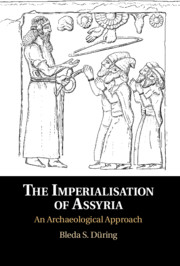Book contents
- The Imperialisation of Assyria
- The Imperialisation of Assyria
- Copyright page
- Dedication
- Contents
- Figures
- Tables
- Acknowledgements
- A Note on Chronology
- Introduction
- One A Fragmented World
- Two A City at the Fringe?
- Three The Rise of Assyria
- Four A Patchwork Empire
- Five Practising Empire
- Six Rulers of All the World
- Conclusions
- Bibliography
- Index
Five - Practising Empire
Published online by Cambridge University Press: 24 January 2020
- The Imperialisation of Assyria
- The Imperialisation of Assyria
- Copyright page
- Dedication
- Contents
- Figures
- Tables
- Acknowledgements
- A Note on Chronology
- Introduction
- One A Fragmented World
- Two A City at the Fringe?
- Three The Rise of Assyria
- Four A Patchwork Empire
- Five Practising Empire
- Six Rulers of All the World
- Conclusions
- Bibliography
- Index
Summary
In popular discourse there is often a perception that empires and imperialism were primarily about the exploitation of dominated territories and the transfer of wealth to the imperial heartland, and that the legacy of these relationships of economic exploitation continue to structure the present world order. This idea that the empires were about extraction of wealth for the benefit of the heartland is also manifested in archaeological studies of empires, including many on Assyria. This notion – that imperial exploitation benefited the imperial heartland – is problematic, however.
- Type
- Chapter
- Information
- The Imperialisation of AssyriaAn Archaeological Approach, pp. 95 - 132Publisher: Cambridge University PressPrint publication year: 2020

